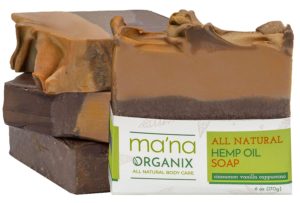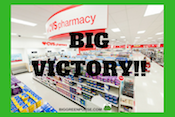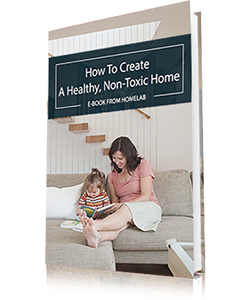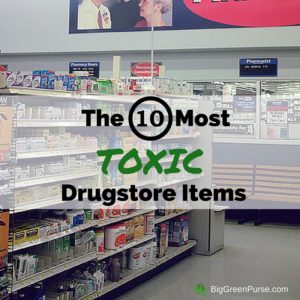Women’s Voices for the Earth is among the most effective organizations in the country when it comes to protecting women and children from exposure to toxic chemicals. I sat down with Cassidy Randall, the Outreach and Campaign Manager for WVE (pictured below) to find out more about how Women’s Voices makes a difference – and what you can do to help.
Why does WVE focus so directly on toxic
chemicals? Aren’t laws like the Toxic Substances Control Act protecting us
already?
Unfortunately,
the Toxic Substances Control Act is outdated and fails to protect us from
harmful chemicals like BPA, lead, and phthalates. Of the more than 80,000
chemicals out there in consumer products, only 200 of them have ever been
adequately tested for safety.
Most
of those chemicals that have been tested have been looked at only for their
short-term impacts to adult men in industrial settings. That’s one of the
reasons why WVE focuses on toxic chemicals and women’s health: how women are exposed and the health impacts on
women–especially girls, women of color, and women of childbearing age–are
unique and have been mostly overlooked in the past.
There
are a number of reasons that women are more impacted by toxic chemicals. First,
women are much greater users of consumer products that can contain toxic
chemicals:
* While
gender roles have certainly changed over time, studies show that women are still
doing over 70% of the housework in the average home, which means a higher
exposure to household cleaning chemicals.
* Fragranced
products are more heavily marketed to women, and women are more likely to
suffer from fragrance allergy than men.
Second,
women carry the health impacts of toxic chemicals in a unique way. Women have a
higher percentage of body fat, and many chemicals tend to accumulate in fat
tissue. Women can also pass chemicals on to their children during pregnancy and
through breastfeeding.
Lastly,
Women’s Voices for the Earth believes that women have tremendous social,
polictical, and economic power to change the systems that allow toxic chemicals
in our products in the first place. That’s why we create opportunities for
women to raise their voices, whether it’s to spread the word to friends and
family, call on companies to make safer products, or ask lawmakers to pass
policies that will truly protect us from toxic chemicals.
Don’t companies that produce the
products we use have to meet standards for health and safety?
Yes, there are certainly some standards
in place, but they’re few and far between. And the standards that do exist are inconsistent
across industries.
For example, the cosmetics industry is
self-regulated. Guess who reviews the safety of cosmetics? Not the Food and
Drug Administration, but the Cosmetics Ingredient Review panel. Guess who pays
them to do that job? Cosmetics companies!
And we’ve seen how ineffective this system
is with the Brazilian Blowout blowup. This popular hair straightening treatment
contains up to 10% formaldehyde (a known cancer-causing chemical) – but the
company was lying and labeled their bottles formaldehyde-free. Neither the
cosmetics industry nor the FDA has done anything to protect stylists and their
clients from this toxic product, although it’s been taken off the market in
several other countries.
Another great example is the cleaning
products industry. There’s no law that cleaning product companies have to list
the ingredients in their products, which means that companies are allowed to
keep toxic chemicals like phthalates and synthetic musks a secret from
consumers.
This is why WVE is working on some
government policies right now – because we need strong safety standards across
the board. We’re working to pass the Safe Chemicals Act, which would actually
require that chemicals be tested for safety before
they’re placed in products. We’re also working on the Safe Cosmetics Act, which
would ban toxic chemicals linked to cancer, reproductive harm, and mutations from
personal care and salon products.
Are some chemicals more dangerous than
others? If you had to choose, what three chemicals would you urge women to
avoid at all costs?
We’re not saying that all chemicals are
toxic, because that’s certainly not the case. But some chemicals are harmful to
our health, like chemicals linked to cancer, hormone disruption, fertility
problems, learning disabilities, and other serious health impacts.
It can be difficult to avoid a lot of
harmful chemicals, because many products don’t come with labels and even
labeled products may not list all the ingredients. But here are three toxic
chemicals that can be avoided by checking labels or by switching your products:
- Ditch the canned foods and opt for fresh or frozen
fruits and vegetables instead. - Seek out products from the few companies now using
BPA-free can liners like Westbrae Natural, Hunt’s, Healthy Choice and H.J.
Heinz. - Look for plastics labeled “BPA-free.”
Triclosan
– a hormone disruptor
that’s showing up in blood and breast milk
- Avoid anti-bacterial hand soap with triclosan listed on
the label. - Reduce your use of disinfectant products.
Synthetic
Fragrance – can be made up of hundreds of chemicals, all of which are kept secret from consumers. Common
fragrance chemicals include phthalates (linked to reproductive and
developmental harm) and synthetic musks (which break down the body’s defenses
against other toxic exposures and are linked to increased risk of breast cancer).
- Look for cleaners, laundry detergents, and personal
care products labeled “fragrance-free” Warning: “unscented” does not mean
fragrance-free! - Discontinue use of air fresheners. Click here for tips to reduce odors
around the home.
You can check out our 15 Toxic Trespassers and Ten Steps to Reduce Exposure for more ideas on avoiding toxic
chemicals linked to women’s health problems.
How do you let people like me know what
we should look out for when we shop?
WVE works hard to create
easy-to-understand resources for women to help them protect their health, like
our 15 Toxic Trespassers fact sheet and our Tip of the Month for avoiding
harmful chemicals. And because we know it can be overwhelming to think about
ridding your house of toxic chemicals all at once, we recommend taking it one
step at a time. When your current shampoo runs out, think about replacing it
with one that doesn’t contain synthetic fragrance. Or when pick one step to
take in the kitchen, like buying a big bag of baking soda for deodorizing
instead of a potentially toxic air freshener.
You know that here at Big Green Purse,
we believe that shifting spending to greener products and services is important
for two reasons: it’s a fast and simple way to protect yourself and your
family; and it’s a great way to encourage companies to manufacture safer
products. When it comes to cleaning products, what impact could it have if
women shifted to even one safer cleaning product, whether it be a tub and tile
cleanser or a window cleaner?
When it comes to cleaning products,
women’s consumer power is shifting the face of an entire industry right now.
When we launched our Safe Cleaning Products Initiative in 2007, no companies
were disclosing ingredients and many were still using toxic chemicals like
phthalates, synthetic musks, and triclosan. We developed our Green Cleaning
Party Kit as a solution to some of the toxic cleaners that were on the shelves.
Until we know that products are healthy, it’s safer to make our own cleaners
with non-toxic ingredients like vinegar and baking soda.
As thousands of women participated in Green
Cleaning Parties across the country, companies started to take notice. Women
weren’t buying their products, and they were using their consumer power to show
companies they wanted a change. And companies listened. Now, many major
companies are starting to list some ingredients online, and have started to
remove some toxic chemicals linked to women’s health problems.
So you can make an impact by buying
from a company that lists all ingredients on the label, or from a company that
pledges not to use chemicals like phthalates or synthetic fragrance. Where you
spend your dollars shows what kind of safe and healthy products you want to see
on the shelves.
Could you say more about the house
parties WVE organizes? How can the Big Green Purse community get involved?
WVE’s Green Cleaning Parties and Green
Momma Parties are a fun way to take meaningful steps to reduce your exposure to
toxic chemicals, bring friends and family in on the fun, and take action to
make a difference.
These parties help women to use that
social, economic, and political power mentioned earlier. Not only are WVE
parties fun ways to bring friends together to educate them about harmful
chemicals, they offer immediate solutions for safer alternatives, like mixing your
own non-toxic cleaners and suggestions for safer products. These parties also
give party guests the opportunity to take easy actions to raise their voices
for healthier products right there at the party, like emailing their senator to
support the Safe Chemicals Act, or calling their favorite cleaning product
company and asking them to list ingredients.
The best part is that both the Green
Cleaning Party Kit and the Green Momma Party Guide are free to download! Big
Green Purse followers can sign up on our website to host a party.
So many organizations like WVE are based in Washington, D.C. so they can lobby
Congress. How did you end up in Montana? Do you still manage to lobby Senators
and Representatives from there, or is that not your focus?
That’s a great question! WVE started in
Missoula, MT in 1995 as a local organization that gave women the opportunity to
raise their voices for environmental change. We started out with organizing
women to fight local polluting facilities like incinerators, hard rock mines,
and large-scale pesticide spraying – and it’s always been core to our mission
that our members are part of our work and meaningfully engaged in it.
In 2004, we expanded our work to the
regional level with a successful campaign that convinced Albertson’s to display
mercury warning labels on seafood cases. And we cruised onto the national scene
when we co-founded the Campaign for Safe Cosmetics, and then the National
Healthy Nail and Beauty Salon Alliance a few years later.
Today, WVE is a national organization
focusing our work on eliminating toxic chemicals linked to women’s health
problems, but it’s still the heart and soul of our mission that our members are
involved in our work. We don’t need to be in Washington D.C. because we provide
opportunities for women to raise their voices no matter where they are.
Is WVE a membership organization, too? How can people reading this post support the
great work that you do?
WVE’s members are what makes our work
so successful! There are lots of ways to support our work:
- Sign up for the WVE Action Network to become a member (for free!) and
receive our email updates
- Like
us on Facebook and
start spreading the word about toxic chemicals and women’s health
- Make a donation to support our work to empower women
RELATED POSTS:
Tell Tide to Clean Up Its Cleaning Products
Looking for safe and healthy baby products? Check out these suggestions from WhattoExpect.com.
















